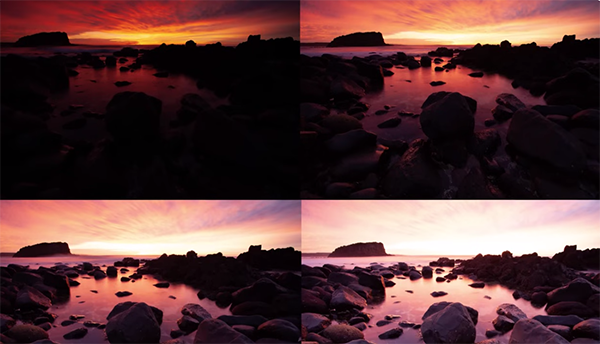Lidl’s bladeless fan is our heatwave must-have – it looks just like Dyson but over £300 less
And you can buy it in stores right now
This tutorial is sure to turn some heads, so if you enjoy surprises you’ve got one in store as a notable pro explains what he says is the easiest way to nail exposure every time. His name is Steve Arnold and he insists that by following his advice you’ll consistently get the light right forever more.
Arnold begins the episode with this promise: I’m going to show you a simple method pros use to easily capture perfectly exposed images without ever having to worry about all the complicated stuff like calculating stops, ambient light or metering so you never have to worry about missing a shot again.”
So what is this miraculous surprise? Manual Mode! You heard us right. Arnold puts it like this: “I want to dispel a common myth and explain why using your camera in any kind of Auto mode is the hardest way to shoot—while using a camera in full Manual mode is the easiest.” We bet you weren’t prepared to hear that.

This notion certainly contradicts conventional wisdom, but we suggest giving Arnold the benefit of the doubt as he explains the reasoning behind this technique that’s supposedly reserved for very experienced shooters.. You may even agree and rotate your camera’s mode dial to “M” by the time this six-minute discussion concludes.
Arnold provides this reminder with most photographers would agree: “When shooting in full Auto, Aperture Priority, Shutter Priority, or even Manual with Auto ISO, you’re letting the camera decide what the best exposure is.” His point is that that there’s room for the camera to get it wrong, and your only choice when this occurs is messing around with Exposure Compensation.
On the other hand, “If you want to take all the decisions away from your camera and capture exposure at the right levels for what you’re doing, then Manual mode is the only way to go.” Many photographers would also agree with this statement. What raises eyebrows, however, is Arnold’s insistence that shooting in Manual is easier that using one of the automatic modes.

His explanation is this: “I’m going to lay it out in a way that’s easy to understand and even easier to use when you’re out in the field and it’s crunch time. I’ve got it down to a simple step-by-step process that anyone can follow.” So take a look and give it a try. If this approach works for your there’s an added bonus: You can ignore all the purists who insist that “you’re not a real photographer unless you shoot in Manual.”
There’s lot more to learn, about landscape photography in particular, on Arnold’s popular YouTube channel.
We also suggest watching the related tutorial we posted recently, explaining how another accomplished landscape shooter restores underexposed photographs in Lightroom.
We often discuss the importance of using masks to make selective enhancements to a photo, rather than just relying upon global adjustments that affect the entire image at once. There are a variety of options available, and this tutorial from the PHLOG Photography YouTube channel demonstrates one of the most useful techniques.
The topic for today is Lightroom’s versatile Object Mask tool that simplifies the process for precisely targeting specific elements in a scene without biasing other areas within the frame. German landscape pro Christian Mohrle explains everything you need to know in barely 11 minutes, and we suggest following along by downloading the sample image using the link in the description beneath the video.
Mohrle’s beautiful edits always follow a specific sequence, beginning with several of the aforementioned global adjustments to prepare his photo for the selective masking techniques that follow. Today he’s working with an HDR image so the first step is merging the five bracketed files. He then changes the profile from Adobe Color to Adobe Standard which provides more control over contrast later in the process.

He then modifies White Balance to warm up the shot, drops overall exposure and highlights to bring out more details in the sky, and slightly opens up the shadows. Other preliminary adjustments include carefully bumping up whites, introducing more texture, clarity, and dehaze, and pumping up colors with additional vibrance.
Now that the image is significantly improved, it’s time to further enhance the shot with Lightroom’s Objects Mask tool. There are two options for leveraging this tool: The default approach uses a brush to select the object to be enhanced—in this case a boulder in the foreground that needs to be accentuated.
Mohrle turns to the second option for targeting the jagged mountains in the distance, because they’re too complicated for the brush. Instead he employs the Rectangular tool and demonstrates how to achieve a precise selection of the peaks and make the necessary enhancements.

Once the masking is finished Mohrle completes the impressive transformation with careful color grading and a bit of judicious sharpening. The effectiveness of this straightforward technique is readily apparent when you compare Mohrle’s before/after images.
If landscape photography is your thing we strongly recommend checking out Mohrle’s robust YouTube channel where there’s much more shooting and editing advice to be found.
And don’t miss the tutorial we posted from another post-processing expert who explains what you may not understand about Lightroom’s powerful histogram and how to use it for perfectly balanced photographs every time.
